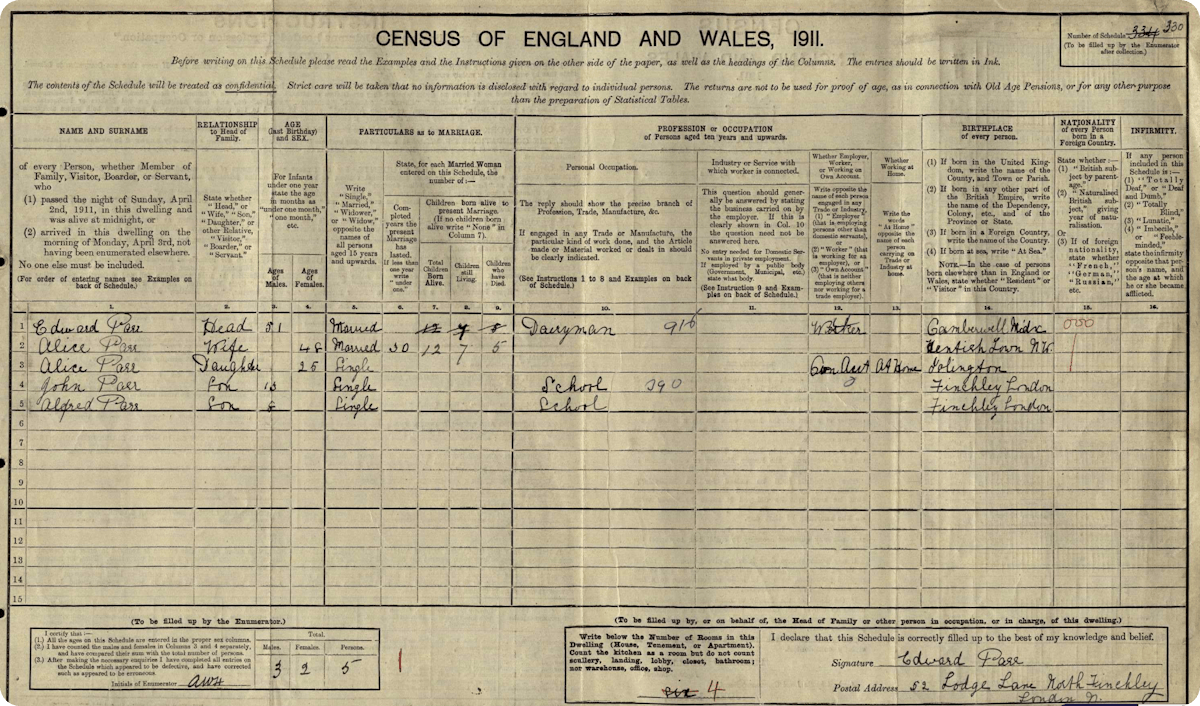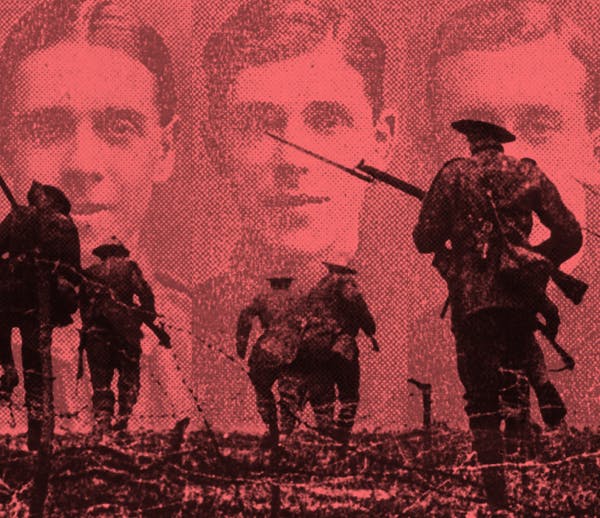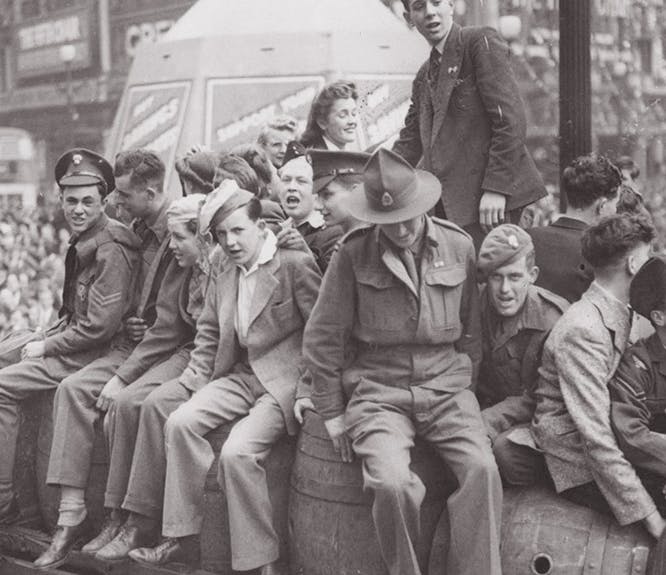Remember their story: the first and last British soldiers killed in the First World War
4-5 minute read
By Daisy Goddard | October 11, 2024
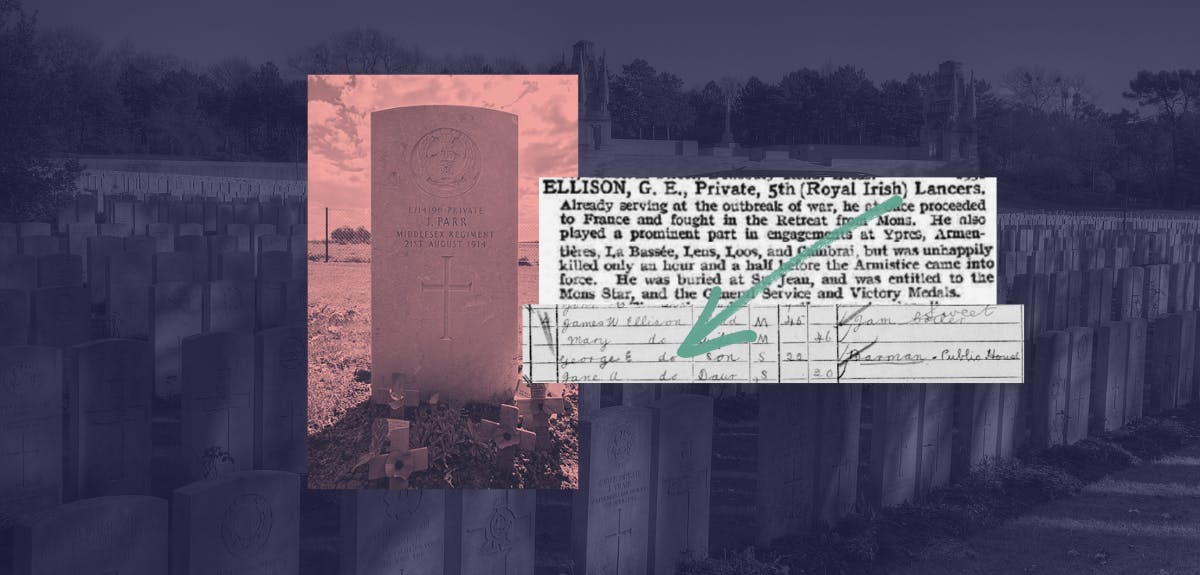
Placed opposite each other in the cemetery are the graves of Private John Parr and Private George Ellison. But what did these two men have in common?
As with any military cemetery, the St Symphorien military cemetery near Mons in Belgium tells the harrowing stories of men who lost their lives too soon. There are 284 German and 229 Commonwealth soldiers buried at St Symphorien – but two of these men are linked by a strange coincidence.
They were the first and last British soldiers to be killed in the First World War. As revealed by our military and census records, these are their stories.
John Parr: the first British soldier to die in the First World War
Private John Parr was the first British soldier to die in the First World War. He was killed in Bettignies, France on 21 August, just 17 days after Britain declared war. John’s death was a tragedy – and his story is one that may surprise you.
John Parr was born in Barnet, North London in 1898.
We found John aged 13 in the 1911 Census. He lived at 52 Lodge Lane, North Finchley along with his parents (Alice, b.1863 and Edward, b.1860), his elder sister Alice, and his younger brother Alfred. His father worked as a dairyman.
The family’s census entry reveals a story of tragedy. It’s reported that Alice Parr had a total of 12 children, but five had died. Before John’s untimely death in 1914, this working-class family had already suffered immense loss.
John Parr joined a territorial unit of the Middlesex Regiment in 1912 when he was aged just 14 – 5 years too young to meet the British Army’s age requirement. John lied about his age on joining, thus, we find him listed as 17 in his service record.
As reported in his record, John was just 5 foot 3” when he joined the Army and weighed 112 lbs. His youth and small stature earned Parr the nickname ‘Ole Parr’ within the Regiment.
When war broke out in 1914, John Parr’s unit was sent to the village of Bettignies, France. As a reconnaissance cyclist, it was John’s role to ride in front of his fellow soldiers to gather information on the enemy ahead. He was tragically struck down while performing his duty on 21 August.
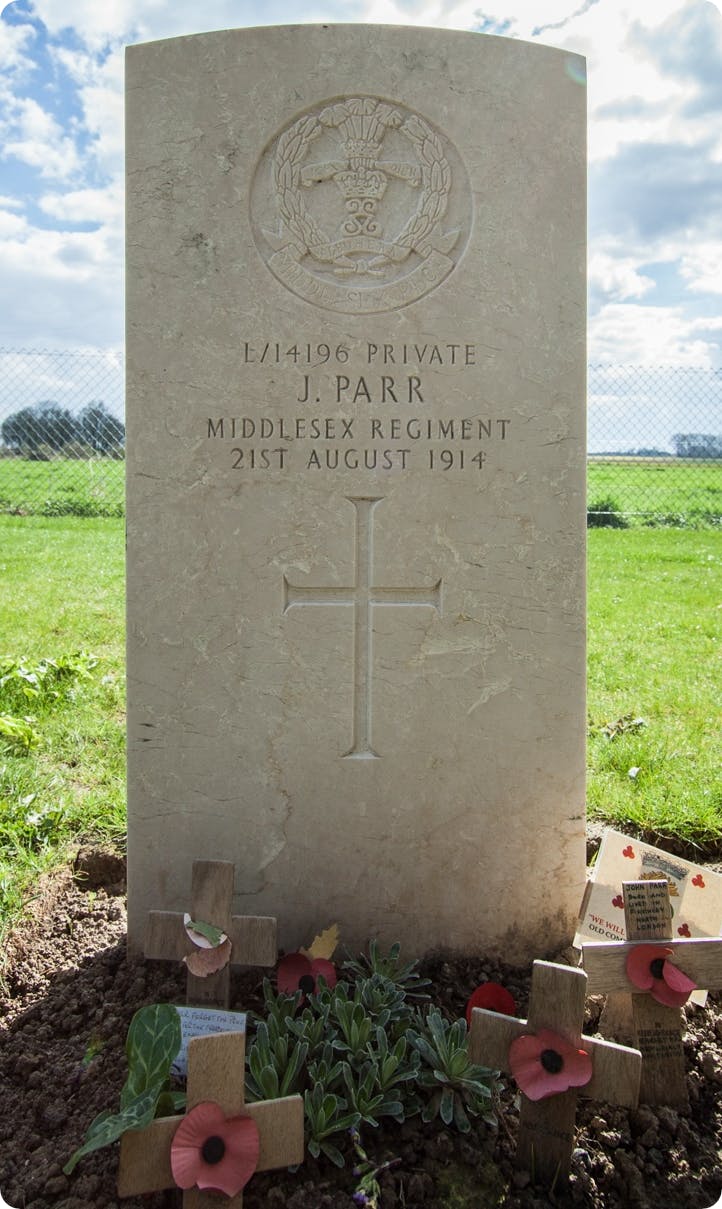
Image credit: Wernervc, CC BY-SA 4.0, via Wikimedia Commons.
John Parr’s body was never identified. His mother never received confirmation of his fate, despite writing to the Middlesex Regiment repeatedly. Although his grave in the St Symphorien military cemetery lists John’s age as 20, he was actually just 17 when he died.
George Edwin Ellison: the last British soldier to die in World War 1
Four years and three months later, over 700,000 British servicemen had lost their lives in the conflict. On 11 November 1918, representatives of Germany and the Allied powers gathered in Compiègne, Northern France to end the war. They signed the armistice treaty at 5:45 am, agreeing to cease fighting at 11:00 am.
Tragically, over 2,700 men died on 11 November before the armistice was announced. The very last of these soldiers to die was George Edwin Ellison, who was shot on the outskirts of Mons, Belgium just 90 minutes before peace was announced.
George Edwin Ellison was born in Leeds in 1878, to parents James (1856-1916) and Mary (b.1850). As the 1881 Census reveals, the family lived in York in 1881. James was a confectioner. Aged 2, George is listed alongside his older brother Frederick and younger sister Jane.
George Edwin Ellison lived with his parents until his early 20s. In the 1891 Census, we find them in Sculcoates, Yorkshire. Ten years later, they had moved to Hartlepool. James continued to work in the confectionary trade (as a sugar and jam boiler), and aged 22, George was now working as a barman in a public house.
In the first decade of the 1900s, George joined the British Army. By 1911, however, he’d left to pursue a quieter life – he worked as a coal miner and married Hannah Maria Burgan in 1912. The couple welcomed a son, James Cornelius, on 16 November 1913.
With the outbreak of war in 1914, George was recalled to the army. He served with the 5th Royal Irish Lancers, seeing trench warfare at key historical battles like Ypres and the Somme. His service is recounted in our Service Medal and Award Roll Index.
After surviving four years of frontline service, George was killed near Mons, just before the armistice was announced. Tragically, he died just five days before his son James’ fifth birthday.
The Ellison family suffered great loss during the war, as three of their men died within the space of two years. James (George’s father) died in 1916 aged 60. Just a year later, on 15 June 1917, his son Frederick (George’s brother) died at sea. He was serving as a skipper with the Royal Naval Reserve, aboard the H.M. Trawler Towhee.
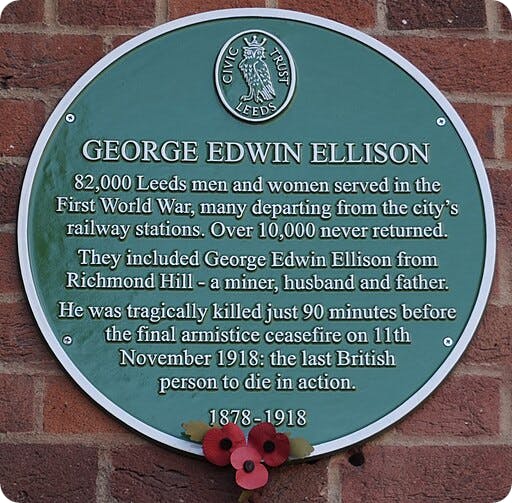
A plaque commemorating George Edwin Ellison in Leeds train station. Image credit: George Edwin Ellison by Ian S, CC BY-SA 2.0, via Wikimedia Commons.
The stories of James Parr and George Edwin Ellison highlight the immense human cost of the First World War and the harrowing loss experienced by so many families.
Through the lives of their ancestors, the heroic spirit of James and George lives on. That their graves today sit opposite one another at St Symphorien military cemetery is an ironic twist of fate which reminds us of the huge collective sacrifice suffered.
No story left behind
Every family has a connection to war. What’s yours?
Discover and commemorate the bravest ancestors in your family tree with detail-rich service records and medal rolls. Military records offer unmatched family tree facts like next of kin information, where your ancestors served and even what they looked like. Ensure these precious chapters of your family’s wartime legacy are preserved forever.
Header image credit: Pir6mon, CC BY-SA 3.0, via Wikimedia Commons.
